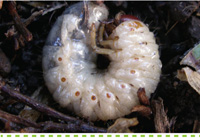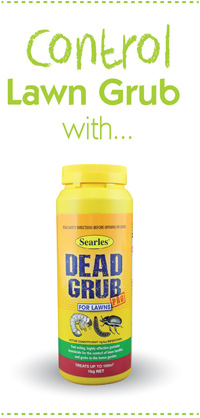What do White curl grub look like
The first type of lawn grub is the white curl grub. These white, ‘C’-shaped grubs are the larvae of the cockchafer beetle or African black beetle. (Commonly, these grubs are wrongly identified as ‘witchetty grubs’ when observed by home gardeners.) White curl grubs live beneath the soil surface and feed on the healthy roots of grass. Like armyworm, these pests have been known to destroy entire lawn areas completely within a matter of weeks.
How to detect white curl grub
Look for visual signs, such as circular patches in your lawn turning brown or yellow. Your lawn may feel soft and spongy to walk on and you may find grass lying loosely on top of your lawn. (In advanced cases, sections of lawn will be able to be lifted off the surface of the soil like a toupee, as there is no root system left.) For a final confirmation that white curl grubs are present, place a wet hessian bag on your lawn overnight. In the early morning, lift the bag to see if the grubs have come to the surface.
Lawn armyworm attacks leaves, stems and seedheads. Their name relates to the fact that they quite often occur in large proportions and quickly devour the grass before moving on to new grass areas.
If you notice lots of grey moths around your lawn, they are a good indicator that lawn grubs are present.
What time of year
Most lawn grub activity occurs in late spring through summer to autumn. Adult lawn beetles become active in spring, which is when they start mating and laying eggs.
How to control white curl grub
The good news is that lawn grubs and lawn armyworms are easy to control. To do this, sprinkle Searles Dead Grub Pro granules over the lawn. They are easy to apply as they come in a granular shaker bottle and there is no need for spraying. For best results, start applying early to mid spring, before the beetle has laid its eggs.
Searles Dead Grub (Bifenthrin) is a cost-effective broad-spectrum insecticide that are used to control lawn armyworm, African black beetle and a variety of other grubs & beetles in lawn and garden situations.

|
 |

